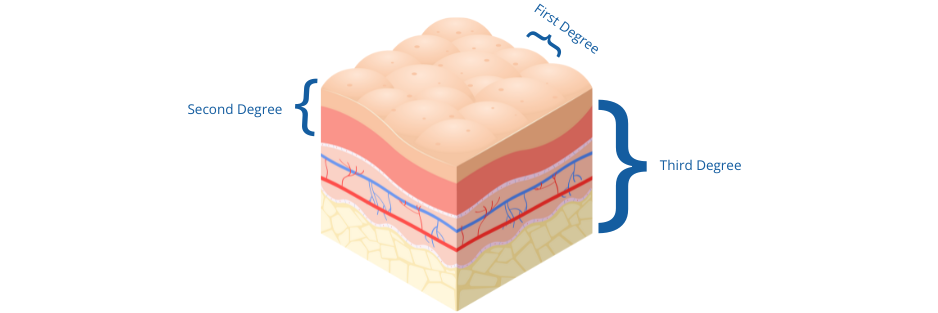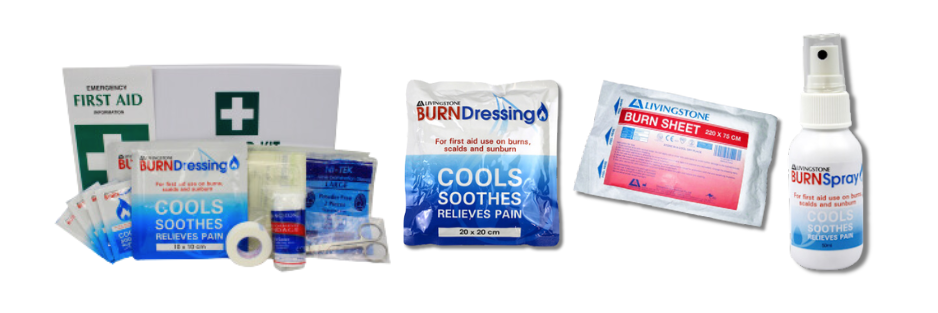
Burns are categorised into three main classifications based on their severity and depth of tissue damage:
- First-degree burns affect the outer layer of skin, causing redness and mild pain, but generally heal within a few days without scarring.
- Second-degree burns penetrate deeper into the dermis, causing blisters, severe pain, and potentially leaving scars
- Third-degree burns extend through all layers of the skin, leading to charred, white, or blackened areas with loss of sensation due to nerve damage. They require immediate medical attention and often result in long-term complications.
Classification guides treatment and prognosis, with higher-degree burns necessitating specialised care to prevent infection, promote healing, and minimise long-term effects on skin function and appearance.
Fun Fact
First—and Second-degree burns are painful injuries that aggravate the nerve endings and expose them to the external environment. Nerves sit just under the skin’s surface and protect us from harmful elements in our environment.

Epidermis – First Degree
First-degree burns impact the very top layer of our skin and are therefore considered superficial. Cooling the area underwater is highly effective and will help reduce the extent of injury. Epidermal burns can benefit from moisturisers such as an aloe vera ointment or burn-aid cream. They deplete the moisture from the surrounding tissue, damaging the cell’s integrity. These wounds heal over a couple of days and without overt complications.
Partial thickness – Second Degree
Second-degree burns require more involved treatment, including burn-specific dressings and review by a medical professional. They are also at a higher risk for infection, as the body’s natural skin barrier is damaged. Second-degree burns may take 2-3 weeks to heal, resulting in scarring that gradually fades over 6-12 months. Long-term moisturiser use and sun protection are recommended to reduce further scarring.
Full-thickness – third degree
Third-degree burns often require surgical intervention, depending on their location and size. Medical professionals and specialists assess the injuries and associated internal structure damage. The size and depth of the burns may increase over a few days following the initial incident as they continue to develop until the skin temperature stabilises again. Therefore, monitoring burns to address deficits promptly and closely is crucial.

Top tips
- Apply water to your burn up to 24 hours after the incident to reduce the amount of damage sustained.
Suggested Products
Keeping burn-specific dressings at home or in your first aid kit is highly valuable as they can occur at any time.
Click to view the Livingstone Range.

